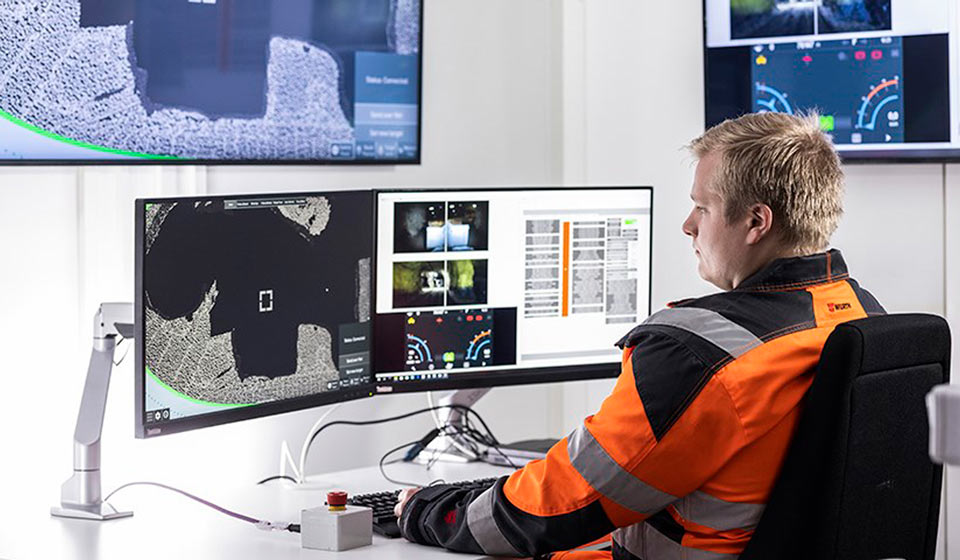
FinMeas automatic measurements ensure that the bored pile wall restraining the cave-in at the Frihamnen port area is working the way it should.
FinMeas automatic measurements were used to ensure that the bored pile wall restraining the cave-in at the Frihamnen port area in Sweden, is working the way it should. Measurements help improve harbour safety and provide new information to support upcoming investments.
Frihamnen’s quayside filled up on top of a muddy seafloor. Erosion has caused soil settlement, and the embankment has sunk into the seabed.
“At worst, the waterfront fell into the sea 1-2 meters in a year,” says construction manager Peter Sundström, who is in charge of maintenance at the Frihamnen quayside.
Ground movements threatened to endanger the safety of harbour buildings in the area. Displacement of soil could also lower the maritime channel that goes right next to the quayside. Correspondingly, the dredging of the maritime channel accelerated the displacement in waterfront embankments.
That is why plans were made in the harbour for stopping the ground movements. Finnish engineering company Arcus Oy designed a bored pile wall that supports the embankment and stops its movements. This makes it also possible to continue the maintenance dredging, which is important for the maritime channel.
Passenger ships to Riga and Saint Petersburg operatet from Frihamnen, and it is used by approximately half of all the cruise ships that arrive in Stockholm. Also, a large container terminal is situated in the harbour.
Construction of the bored pile wall started in autumn 2014. A bored pile wall in this kind of environment is a relatively new solution, so the measurements were supposed to give information also about how the wall itself was working. Accordingly, FinMeas automatic displacement inclinometers and anchor force sensors were installed in the piles of the wall, not in the ground.
“Now we can monitor the wall’s movements in real time and make sure that it is behaving the way the designers have planned it to work,” says Sundström.
The bored pile wall is altogether 60 metres long and 30 metres high. The water level around the wall varies from 6 to 12 metres.
The measurements indicate that the structure is working: the ground movements have been stabilised.
“According to the measured data, the bored pile wall seems to be an extremely well-working solution for this kind of problem. This is important for us to know because similar challenges exist also in other parts of the harbour area. Investing in FinMeas measuring technology will pay itself back,” says Sundström.
Stockholms Hamnar is currently developing the Värtahamnen and Frihamnen harbour area together with the City of Stockholm. New apartments and business premises are being built in the area, and some of the current docks will be filled. The quayside will also be extended further to the bay.
Sundström appreciates the real-time information provided by FinMeas automatic measuring devices. Arcus monitored the wall movements, but Sundström also regularly visited the FinMeas Online service to check the data.
At Arcus, hydraulic engineer Kim-Andersson Berlin was responsible for following the measuring data and modelling the structures. According to him, monitoring structures during a project is more common in Sweden than it is in Finland. It is used specifically to improve working safety.
Andersson-Berlin thinks that the measuring results of Frihamnen’s bored pile wall will awaken also academic interest on a larger scale, since reliable information about similar structures is not commonly available.
Sundström is pleased with both the functionality of both the wall and the measurements:
“FinMeas devices are reliable, and the service is easy to use. We have had a good cooperation. They are experts in their branch, and I am very pleased with our partnership.”
FinMeas automatic inclinometers and anchor force measurements were used as a solution in this project.

